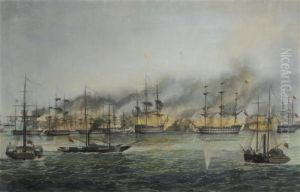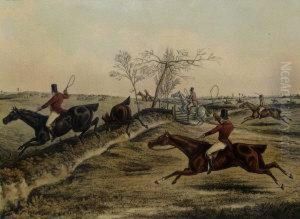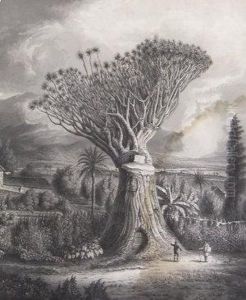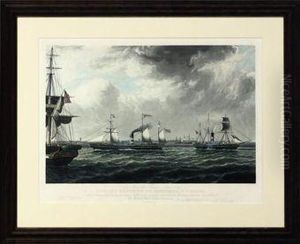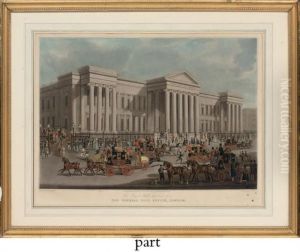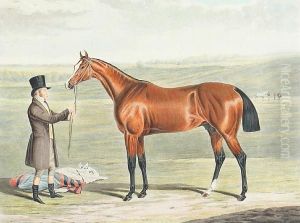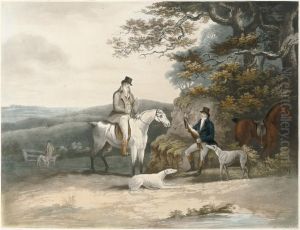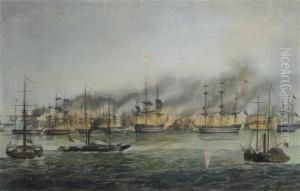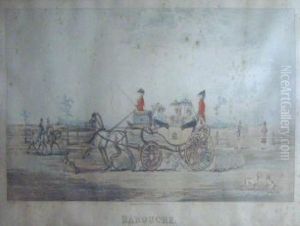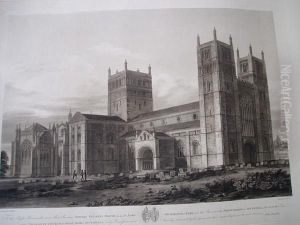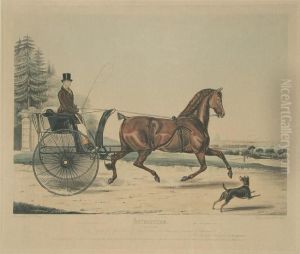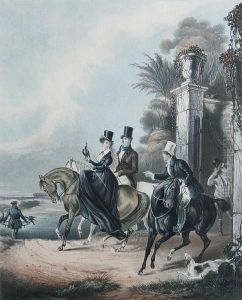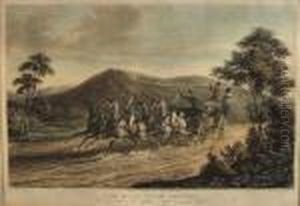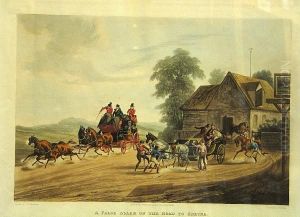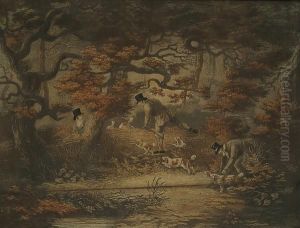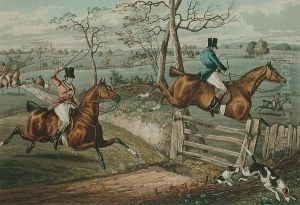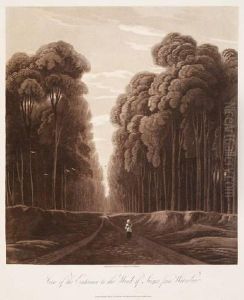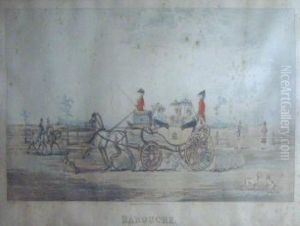Richard Gilson Reeve Paintings
Richard Gilson Reeve was an English engraver, born in 1803. He hailed from a family with a strong tradition in the art of engraving, being the son of Samuel William Reynolds, a notable mezzotint engraver. Throughout his career, Reeve specialized in engraving works after other artists, contributing significantly to the dissemination of visual culture in the 19th century. His works encompass a variety of subjects, including landscapes, portraits, and maritime scenes, showcasing his versatility and skill in capturing the essence of the original artworks.
Reeve's career spanned several decades, during which he collaborated with many prominent artists of his time. He was particularly known for his ability to translate the subtleties of paintings into engravings, a skill that made his work highly sought after by publishers and collectors alike. In addition to his contributions to the art world through his engravings, Reeve played a role in the broader cultural milieu of 19th-century England, participating in the vibrant artistic and intellectual communities of his era.
Despite his contributions, Richard Gilson Reeve remains a relatively obscure figure in the history of art, often overshadowed by contemporaries with more flamboyant personas or revolutionary techniques. However, his work continues to be appreciated by connoisseurs and historians for its technical excellence and beauty. Reeve's engravings not only serve as a testament to his own skill and dedication but also provide a valuable window into the visual and cultural trends of the 19th century.
Richard Gilson Reeve passed away in 1889, leaving behind a legacy of craftsmanship and a body of work that continues to be studied and admired for its contribution to the art of engraving. His life and work exemplify the role of the artisan in the 19th century, bridging the gap between the original artist and the public, and ensuring that art was accessible to a wider audience through the medium of engraving.
